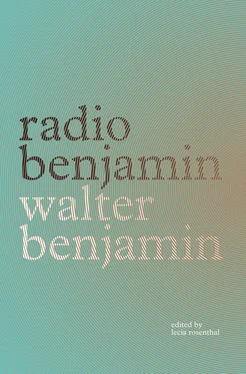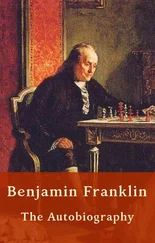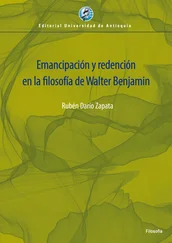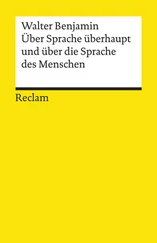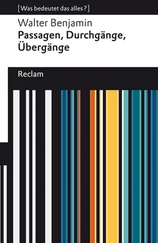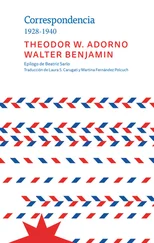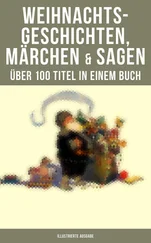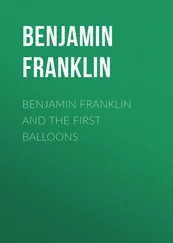There’s much to learn from this story if you are so inclined. You could take the easy way out and simply say: there’s a fool born every minute. But on closer examination, the essence of Cagliostro’s story holds a more important truth.
At the beginning I spoke of the Enlightenment, an age in which people were very critical of the traditions of government, religion, and the Church, and indeed, we can be thankful for the great strides made during this period in terms of freedom and culture. It was precisely during this free and critical Age of Enlightenment that Cagliostro was able to turn his artistry to such advantage. How was this possible? Answer: precisely because people were so firmly convinced that the supernatural world did not exist, they never took the trouble to reflect upon it seriously and thus fell victim to Cagliostro, who led them to believe in the supernatural with a magician’s finesse. Had their convictions been weaker and their powers of observation stronger, they wouldn’t have succumbed. This is another lesson from the story: in many cases, powers of observation and knowledge of human nature are even more valuable than a firm and correct point of view.
“Cagliostro,” GS, 7.1, 188–94. Translated by Jonathan Lutes.
Broadcast on Southwest German Radio, Frankfurt on February 14, 1931. The Südwestdeutsche Rundfunk-Zeitung announced the broadcast, with a variant title, for February 14, 1931, from 3:20–3:50 pm: “Youth Hour, ‘Der Erzzauberer Cagliostro [The Arch-Magician Cagliostro].’ Talk by Walter Benjamin.”
1From “Der Pseudo-Graf Cagliostro (Aus dem Tagebuch eines Reisenden, Straßburg, 1783)” [The Pseudo-Count Cagliostro (From the Diary of a Traveler, Strasbourg, 1783)], Berlinische Monatsschrift 4 (December 1784), 536–9. See also: Der Erzzauberer Cagliostro: Die Dokumente über ihn nebst zwölf Bildbeigaben, ed. Johannes von Guenther (Munich: G. Müller, 1919), 185–7.
2For Goethe’s account of Cagliostro and meeting his family, see Italienische Reise, in Goethes Werke, vol. 10 (Gera: C. B. Griesbach, 1897), entry for 13 and 14 April, 1787, 312f ( Italian Journey, trans. W. H. Auden and Elizabeth Mayer [London: Penguin, 1992], 247f). Goethe’s play Der Großkoptha [The Grand Cophta], a satire on Cagliostro’s life and his involvement in the so-called Affair of the Diamond Necklace, was completed in 1791.
3 Le Courier de l’E urope was a bilingual political bi-weekly published in London and Paris between the years 1776–1792. From 1784–1791, it was edited by Charles Théveneau de Morande (1741–1805), who famously engaged in an exchange of accusations and counteraccusations with Cagliostro.
CHAPTER 20. Postage Stamp Swindles
Today I’d like to speak about something that even the most learned and clever postage stamp experts have not been able to keep up with: fraud. Postage stamp fraud. In 1840 Rowland Hill, a mere schoolteacher at the time, invented the postage stamp, for which the British government would later appoint him postmaster general of England, knight him, and award him a gift of 400,000 marks. Since his invention millions upon millions have been earned with these little scraps of paper, and many individuals have made their fortunes with them as well. From your Senff, Michel, or Kohl catalogs you certainly know how much a single one of them can sometimes be worth. 1The most valuable of them all is not, as most believe, the twopenny “Post Office” from Mauritius, but rather a one-cent stamp from British Guiana, a provisional stamp from the year 1856, of which, evidently, only one specimen remains. It was printed at the local newspaper with the same crude printing plate used for shipping company advertisements. This single remaining specimen was discovered years ago by a young Guianese collector among some old family documents. It then found its way into the La Renotière collection in Paris, which was the largest stamp collection in the world. No one knows how much its owner paid for this stamp, but its catalog price is now 100,000 marks. Already by 1913 the collection it joined comprised over 120,000 stamps, and was estimated to be worth well over 10 million. Of course, only a millionaire could afford to amuse himself compiling such a collection. Whether or not it had been his intent, he earned millions more from his collection. Its beginnings go back to the year 1878. 2However, the beginnings of stamp collecting itself date back another fifteen years. In those days collecting was easier than it is today, not only because there were many fewer stamps; not only because things that are prohibitively expensive now were much easier to come by back then; and not only because one could much more easily collect them all, but also because there were no forgeries in those days, or at least, none perpetrated in order to deceive collectors. Those of you that read stamp journals surely know that new forgeries are written about as something quite ordinary, even expected. And how could it be otherwise? Stamps can be so lucrative and the world of stamps has become so vast that no one can keep track of it all. In 1914, before the countless war and occupation stamps appeared, there were no less than 64,268 different stamps.
So, forgery. You know that whenever anything is collected it will be forged, without exception. While forgeries intended to fool the more dim-witted can be rather coarse and haphazard, others are too intricate even for the greatest experts to spot, and still others are so well executed that it takes decades to reveal them as forgeries, if they’re ever uncovered at all. Many collectors, especially beginners, think they’re safe from forgery if they concern themselves only with used stamps. This is because a number of states, particularly the Papal States, Sardinia, Hamburg, Hanover, Heligoland, and Bergedorf, reprinted rare sets of stamps that were no longer in use, and delivered them directly to collectors. These reprints, or, if you will, forgeries are all characterized by the fact that they’re not postmarked. But this is a special case that does not hold true across the board. There is nothing more preposterous than to say, “This stamp is counterfeit, because it’s not postmarked.” It would be much more accurate to say: this stamp is postmarked because it’s counterfeit. For there are in fact many fewer counterfeit stamps that are not postmarked: for the most part, only those where the forger, if we can use this word, is the state. The private forger who dares to counterfeit an intricately designed stamp can surely replicate a simple postmark as well. And when he has finished his forgery, he looks it over once more, very closely, searching for any irregularity that he can then obscure by covering it with a postmark. In short, collecting only postmarked stamps would protect you from some reprints but not from the great majority of counterfeit stamps. Very few collectors know which country enjoys the greatest reputation among stamp forgers, in other words, where the most successful counterfeits are made. That would be Belgium. Not only do Belgians counterfeit their own postage stamps — most famously the Belgian five-franc stamp — but they’re equally willing to forge foreign stamps, such as the one-peseta German Morocco.
To offload their goods, the forgers have found a great trick that both earns them more revenue and ensures they don’t get caught. They explicitly advertise their products as what they are: fakes. In marketing the counterfeit stamps as non-genuine, they of course forgo the huge profits of other forgers. But because their buyers, for the most part, intend to do just the opposite with these newly acquired stamps, that is, to sell them on as real, the fabricators can ask considerable prices for their wares, which they state are not counterfeits but rather stamps reproduced for scholarly purposes. They send their offerings to small stamp dealers along with literature boasting of the flawless replication of their out-of-circulation stamps, their admirable execution of a brand-new technique, the stamps’ painstakingly faithful imagery, overprints, colors, paper, watermarks, perforations, and — let’s not forget — postmarks. To guard against such goods, large stamp dealers have proposed a sort of guaranty, or mark of authenticity, that clearly indicates which respectable firm has vouched that a given stamp is genuine. Yet others have quite reasonably objected, asking why the image on an original stamp should be disfigured with a company’s seal, no matter how small. Instead, valuable stamps discovered to be counterfeits should be marked with a seal of forgery, or branded, in other words. Furthermore, not everything sold as a “replica” is necessarily intended as forgery. The famous 1864 Penny Black from England, for example, was reproduced a couple of times by the state printing office for the collections of a few English princes. Those of you who remain stamp collectors later on will have your own problems related to forgery, which will teach you more than I’ve told you today, and you will gradually find means to help you in the struggle against counterfeits. Today I’ll mention the title of a single but very important book, the Handbuch der Fälschungen [Handbook of Forgeries] by Paul Ohrt. 3
Читать дальше
